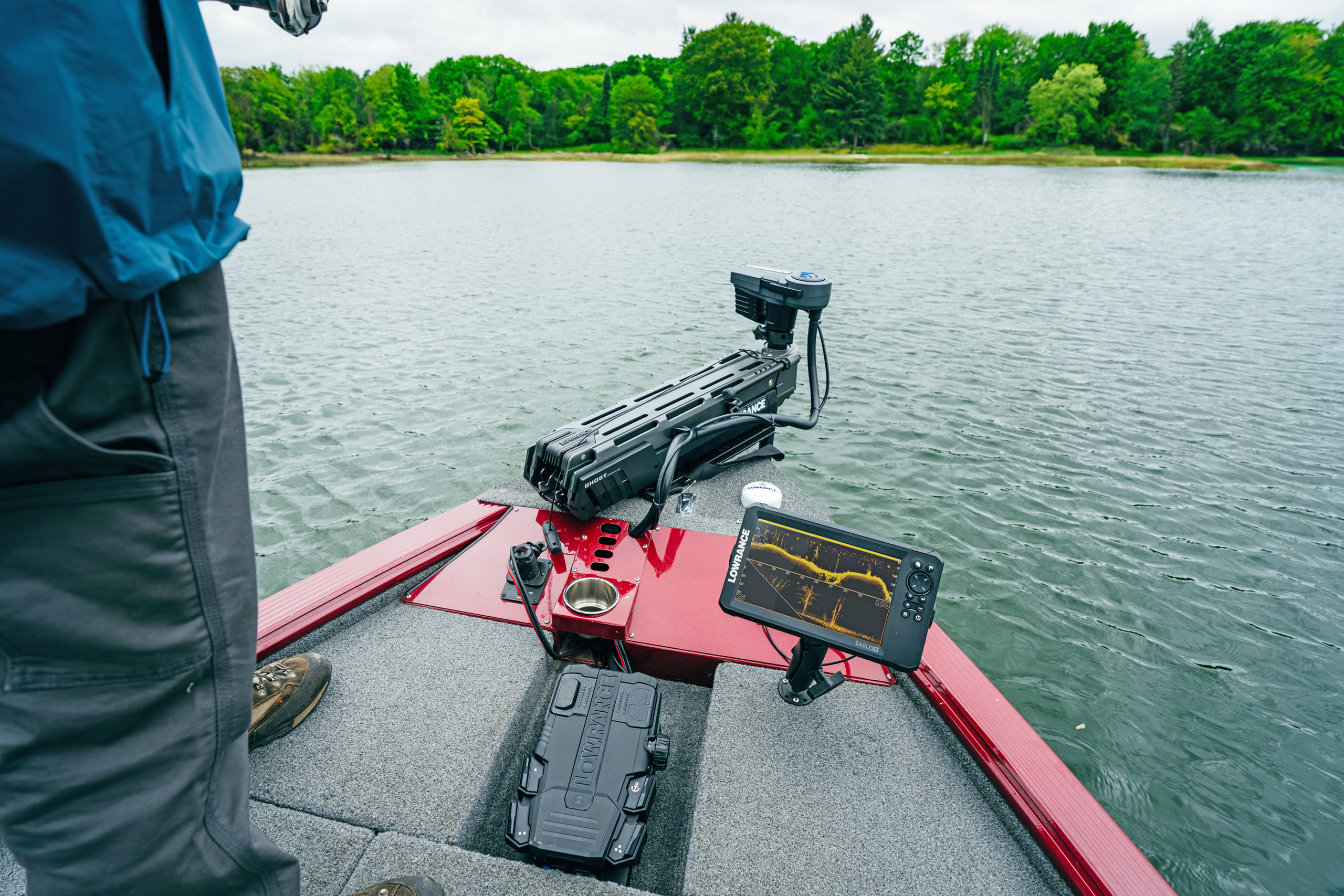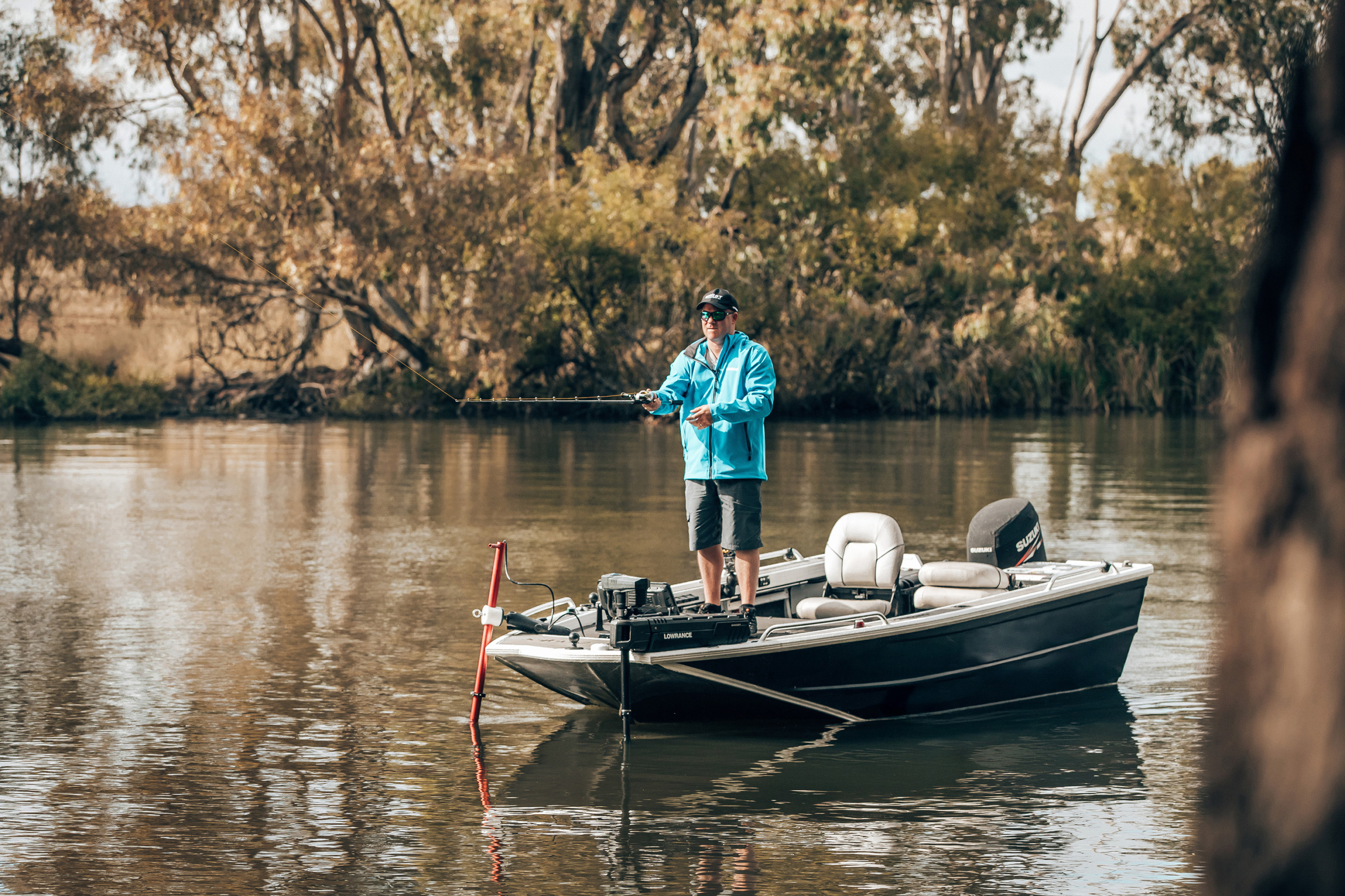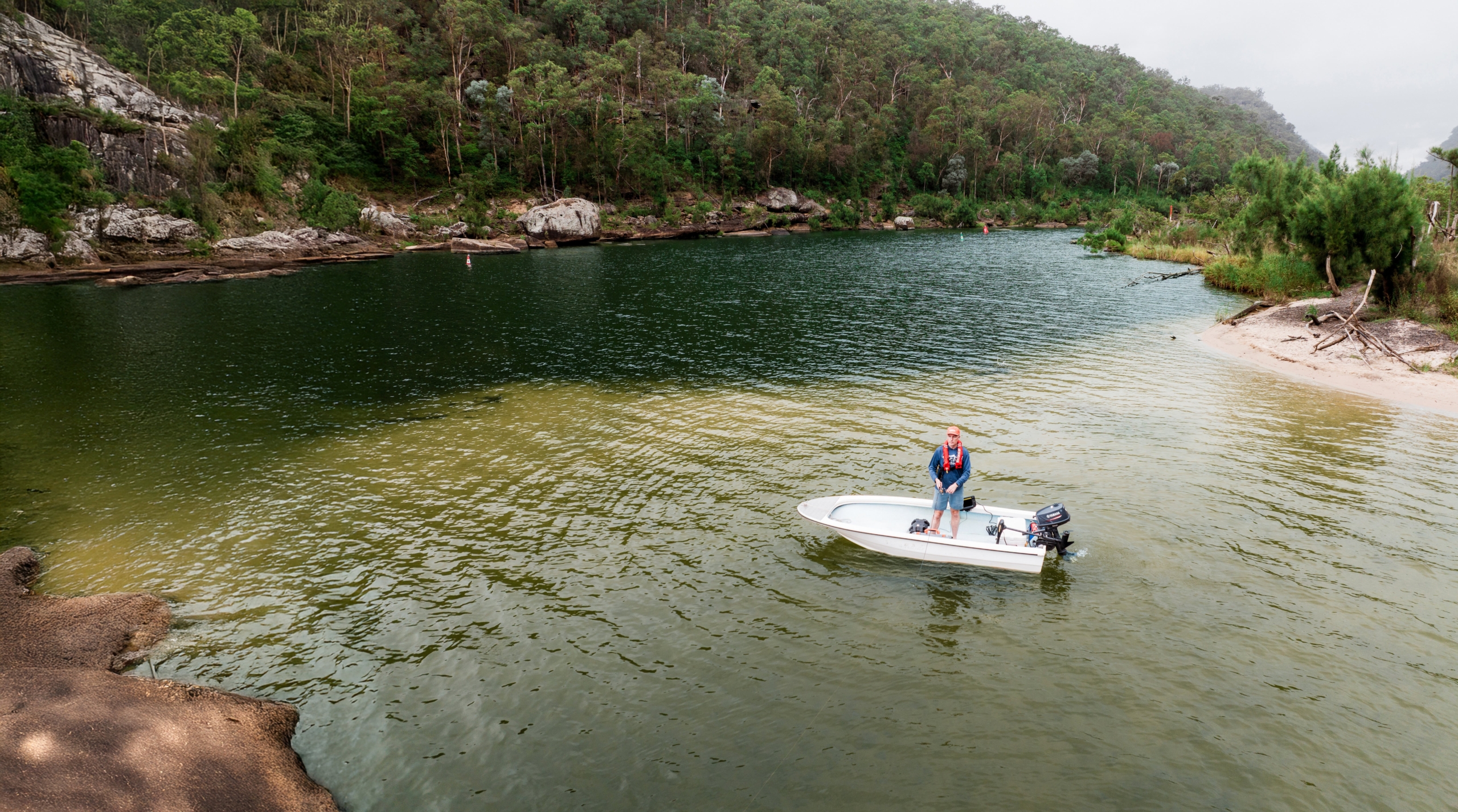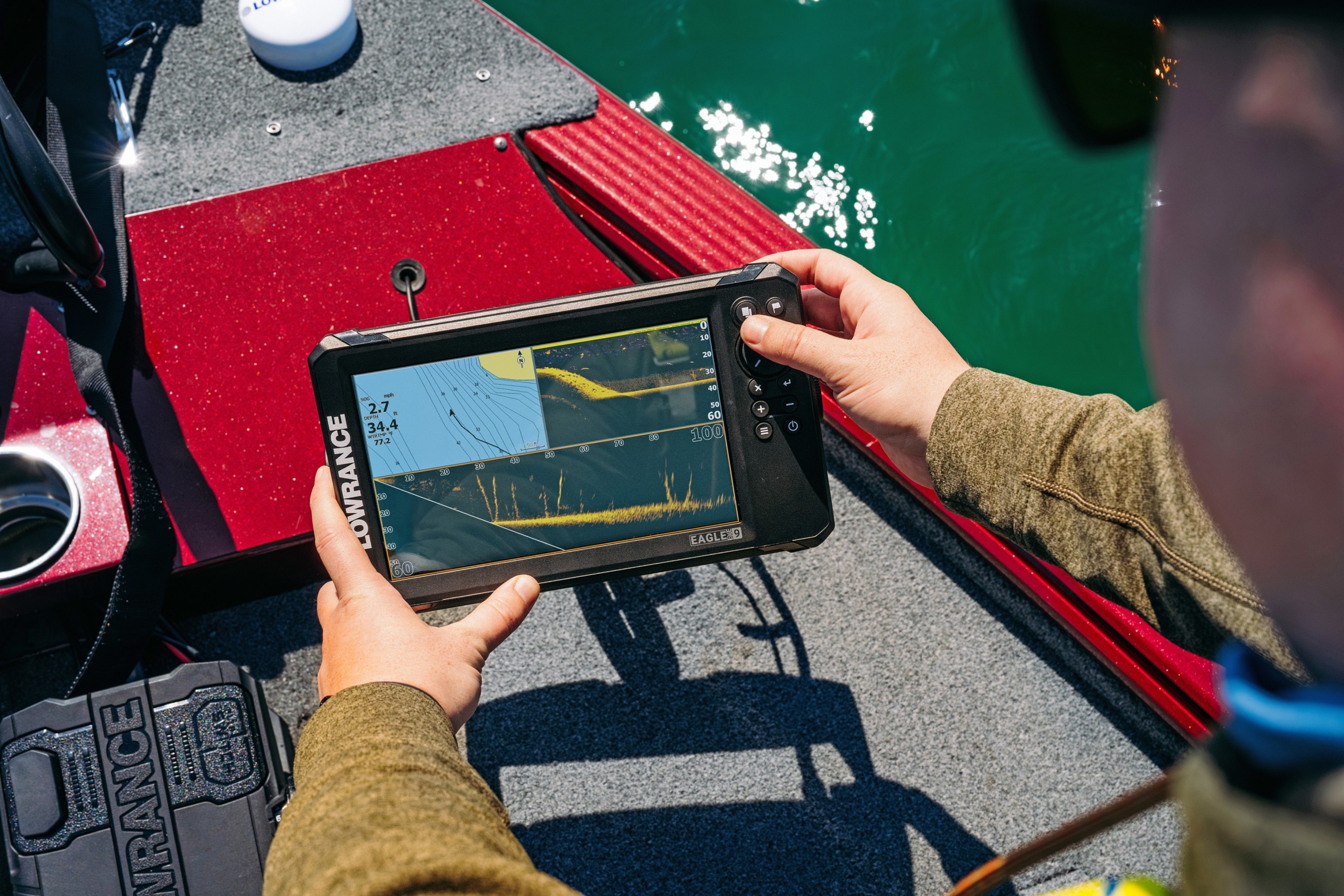
LOWRANCE’S EAGLE EYE IS A FEATURE-PACKED LIVE SONAR FISH FINDER AIMED AT SMALL BOATS AND BUDGET CONSCIOUS ANGLERS.

Live sonar is unquestionably one the greatest technological advances in fishing and boating over the past 20 or more years. In only a short time, live sonar has changed the way many people fish. As a result, it has also increased the catch rate on many different species. The problem with live sonar, or any technology for that matter, is it doesn’t always fit into most people’s budgets or skill sets. Until now! Lowrance recently unveiled Eagle Eye, a competitively priced all-in-one live sonar unit that also offers CHIRP and DownScan imaging in one transducer, plus C-MAP charting. This is available in a 9” clear IPS display.
With a suggested retail price under $1500, the Eagle Eye would fit into the budget of many small boat or ‘tinny’ owners and its plug-and-play design allows for easy installation. The alternative live sonar from Lowrance – the Active Target 2 – and several competing brands cost several thousands of dollars and are far more complicated to use. Those products are fantastic and I enjoy using them and understanding their full capabilities. But they’re not for everyone. Some fishos enjoy keeping things simple, with small boats and easy to use electronics that won’t cost the earth. This is exactly where Eagle Eye is aimed. Best of all, it offers many of the same features of the more expensive Active Target 2.

What is live sonar?
Before we go any further, if you’re new to live sonar, let’s explain how it works. Unlike traditional sonar – and even down- and side-facing sonar – live sonar, as the name suggests, shows what’s under the water in real time. Traditional sonar showed an image of what was under the boat. And while that is highly effective, it is more prone to false readings and anglers who misunderstand how it works. Live sonar however will show you a fish if it’s present. If you see a fish, you cast. If you don’t see a fish, don’t bother. Of course, there’s more to it and I’m seeing a number of highly successful anglers using it with great skill and reaping the rewards.
I remember using live sonar when it first came to Australia. We were on board a boat with a test unit and spent a day fishing the Hawkesbury River with bait. Every time we dropped a bait, a ‘blob’ on the screen would move towards the bait. It was a fish or a school of small fish. Those early models from a few years back didn’t feature the same resolution as these latest releases and fish registered as nothing more than a blob or streak on the screen. Even so, it was clear to see your bait and the fish approach it. As the fish took the bait, you felt the bite or the hook up. It was like playing a video game! A few years later, the latest technology and techniques developed for fishing with live sonar have changed the game forever. It’s still like a video game, but the players are at the next level.

Where is it used?
At this stage and with the technology available, most fishos are using live sonar in fresh water, rivers and estuaries. Fishing freshwater lakes for species such as barramundi and Murray cod is particularly effective when using live sonar. As the technology evolves, the applications will widen. For example, we’re now seeing advanced live sonar used on game boats for big game fish.
This is why the release of the Eagle Eye is so interesting. While Lowrance has its Active Target 2 and HDS PRO technology that offers cutting edge sonar and live technology, the introduction of an affordable multi-purpose unit opens up the technology for a new group of people with the potential of making it a mainstream item in boats of all shapes and sizes.
Simple to use
I’m terrible at installing things and in most cases I’d rather just go fishing than learn the intricacies of a fish finder. However, I installed the Eagle Eye to a small fibreglass project boat. It’s an ideal sounder for a small boat like this. It’s compact, easy to set up and suitable for the styles of fishing and species I’m likely to target in a small boat.
The Eagle Eye is very simple to install. It comes with a small transducer that allows you to fit it on an electric trolling motor or your transom. You could also fit the transducer to a custom pole. These are specially designed poles that allow you to rig the transducer anywhere on your boat and lower it into the water and face it whatever direction is needed.
There are pros and cons for each. For example, I tested this on the transom and also the electric motor. The electric motor seems perfect for fishing. You fish and face it towards the area you intend to search for fish. However, you lose the functionality of the Eagle Eye when you’re not fishing. Remember, this is a multi-purpose unit and offers different types of sonar that are very handy while driving to and from your fishing spot. If you wanted to drive along with the main motor and search for likely spots, you would have to lower your electric motor and that’s not practical.
The alternative is attaching it to the transom of your boat. This is the traditional way of using a fish finder. You can then use it at any time, whether the boat is at idle or moving along under power. However, it’s not quite as good when you’re stopped and fishing because it’s at the back of the boat and it’s scanning an area of water potentially away from where you are fishing.
I still preferred the transom mount and found I could still pick up fish readings in this position. I also like using split screens and often use the DownScan and live sonar split screen or the CHIRP sonar and live sonar split screen. Splitting a screen allows you to see two views and really understand what it is you are viewing on the fish finder. You can also set custom screens. You could have live sonar, chart and DownScan. Being a 9-inch screen with a bright screen and good resolution, having three screens in one still allows you to easily read each part clearly.
Main features
As mentioned previously, Lowrance has built the 9” unit using its new IPS screen. Lowrance says it offers improved resolution, clarity and visibility. It also helps when wearing sunglasses. I found it easy to read, even in bright conditions and at most angles on the boat. Lowrance has also added a new range of colour pallettes that allow you to adapt the display for different light conditions.
The sonar is attuning, so it is very easy to use. It literally took two minutes and I was using it to locate fish. The C-MAP charts offer inland and coastal charts for New Zealand and Australia and also provides the ability to create custom half-foot contour maps of local lakes or unchartered water – in real time – with Genesis Live.
The wrap up
For a ‘budget’ unit aimed at small boat users, the Eagle Eye ticks a lot of boxes. I found it simple to install and even simpler to use. You won’t be spending hours on the water learning the ropes. The screen layout and functions are very intuitive. If you’re looking at trying live sonar for the first time or have a small boat that could benefit from a true multi-purpose fish finder, the Eagle Eye is worth a look.
Visit lowrance.com/en-au/
By Scott Thomas
For boating news, features and interviews, subscribe to Nautilus Marine Magazine here.
